Still working my way through my 2 kg bag of stoneground organic spelt and hoping that I’ll figure this ancient grain out eventually. I wanted to try again at using only spelt for a Hokkaido milk bread. My first attempt was tasty but a bit squat for my liking. Thinking that the gluten net just wasn’t strong enough to retain the pressure of the expanding gases during baking I though that I could improve the bake by increasing the VWG in this recipe. I also increased the tangzhong to 5% and increased the milk.
The pH data on the dough are interesting, at the beginning of bulk end of mixing the pH was 5.82 that is about 0.2 higher than a non enriched all spelt dough. At the end of final proof the pH only fell to 5.71. So again, using a stiff sweet levain has such a great effect on suppressing the LAB population in the levain and thus reducing their population in the final dough. It is a great way to ensure that your enriched bread or other sourdough breads have less sour.
Sweet Stiff Levain
• 53g whole spelt flour (stoneground)
• 24g water
• 18g light brown sugar
• 18g sourdough starter ~100% hydration
1:1.33:2.9:1 starter:water:flour:sugar
Tangzhong classic 1:5 ratio
• 115 g milk
• 23 g Whole Spelt flour (Stoneground)
Dough Dry Ingredients
• 22 g vital wheat gluten
· 424 g whole spelt four (Sprouted)
• 30 g sugar
• 7g salt 1.6%
Dough Wet Ingredients
• 204 g milk
• 50g egg beaten (about 1 lg egg)
• 60g butter melted
Pre-bake Wash
• 1 egg beaten
• 1 Tbsp milk
Instructions
Levain
Mix the levain ingredients in a jar or pyrex container with space for at least 300% growth.
Press down with your knuckles to create a uniform surface and to push out air.
At a temperature of 76ºF, it typically takes up to 10-12 hours for this sweet stiff levain to be at peak. For my starter I typically see 3-3.5 times increase in size at peak. The levain will smell sweet with only a mild tang. If you were to measure the pH you might find that the pH only drops 0.1-0.3.
Tangzhong
In a sauce pan set on medium heat, stir the milk and flour until blended. Then cook for several minutes until well thickened, stirring regularly with a spoon or heat-resistant spatula. Let cool in the pan or, for faster results, in a new bowl. Theoretically it should reach 65ºC (149ºF) but I don’t find I need to measure the temperature as the tangzhong gelatinizes at this temperature. If you prepare this when you prepare the levain, allow it to cool a bit then place in fridge overnight to use in the morning.
Dough
In the bowl of a stand mixer, add the milk, egg, tangzhong, salt, sugar and levain. Mix and then break up the levain into smaller pieces. Next add the flour and vital wheat gluten. I like to use my spatula to mix until there aren’t many dry areas. Mix on low speed and then medium speed until moderate gluten development this may take 5-10 mins the dough will seem quite stiff and dry. Next drizzle in the melted butter a little at a time. The dough may come apart, be patient, continue to mix until it comes together before drizzling in more butter. Once all the butter has been added and incorporated increase the speed gradually to medium. Mix at medium until the gluten is well developed, approximately 10 mins. You can consider resting the dough intermittently during this time You should be able to pull a good windowpane, not quite as good as a white flour because the bran will interrupt the windowpane somewhat.
Interesting note, although the total hydration is relatively high, the dough handles as if it were low. The hydration added in a tangzhong doesn’t seem to affect the dough handling.
On the counter, shape the dough into a tight ball, cover in the bowl and ferment for 2.5-3.5 hours at 82ºF. There may be some rise visible at this stage.
You can next place the dough into the fridge to chill the dough for about 1.5 hours, this makes rolling the dough easier to shape. Remember, if you do so the final proof will take longer. Alternatively, you can do a cold retard in the fridge overnight, however, you may find that this increases the tang in your bread.
Prepare your pans by greasing them or line with parchment paper.
Lightly flour the top of the dough. Scrape the dough out onto a clean counter top and divide it into four. I like to weigh them to have equal sized lobes. Shape each tightly into a boule, allow to rest 5 mins. Using a rolling pin roll each ball out and then letterfold. Turn 90* and using a rolling pin roll each out to at least 8”. Letterfold again from the sides so you have a long narrow dough. Then using a rolling pin, roll flatter but keeping the dough relatively narrow. The reason to do this extra letterfold is that the shorter fatter rolls when placed in the pan will not touch the sides of the pan. This allows the swirled ends to rise during final proof, this is only done for appearance sake and is not necessary. Next roll each into a tight roll with some tension. Arrange the rolls of dough inside your lined pan alternating the direction of the swirls, seem side down, ends of rolls facing the sides of the pan and smooth side up. This should allow a greater rise during proof and in the oven.
Cover and let proof for 6-8 hours, longer time if you chilled your dough for shaping. I proof until the top of the dough comes to within 1 cm of the top edge of the pan.
Preheat the oven to 350F and brush the dough with the egg-milk wash. Just prior to baking brush with the egg-milk wash again.
Bake the loaves for 50 minutes or until the internal temperature is at least 190ºF, rotating as needed to get even browning. Shield your loaf if it gets brown early in the baking process. After 50 mins remove the bread from the pan and bake a further 10 mins by placing the loaf directly in the oven on the rack with the oven turned down to 325ºF. You can brush the top of the loaf with butter if you wish at this point while the bread is still hot to keep the top crust soft.
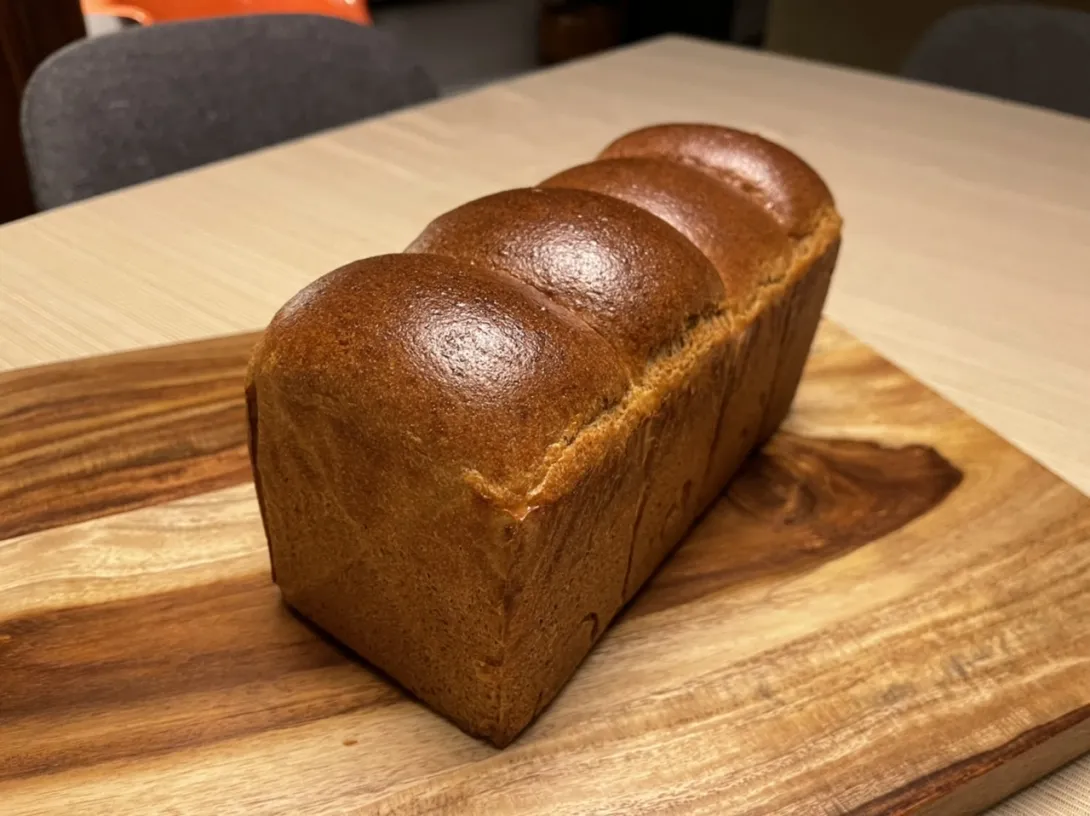
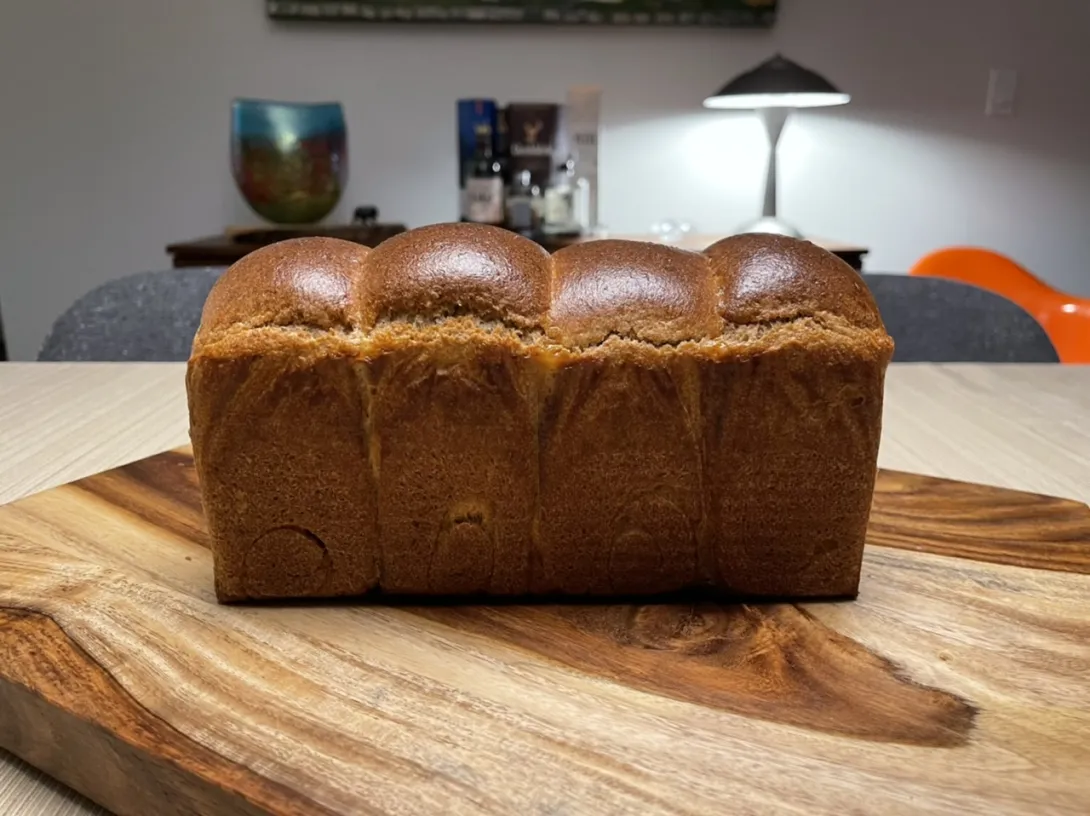
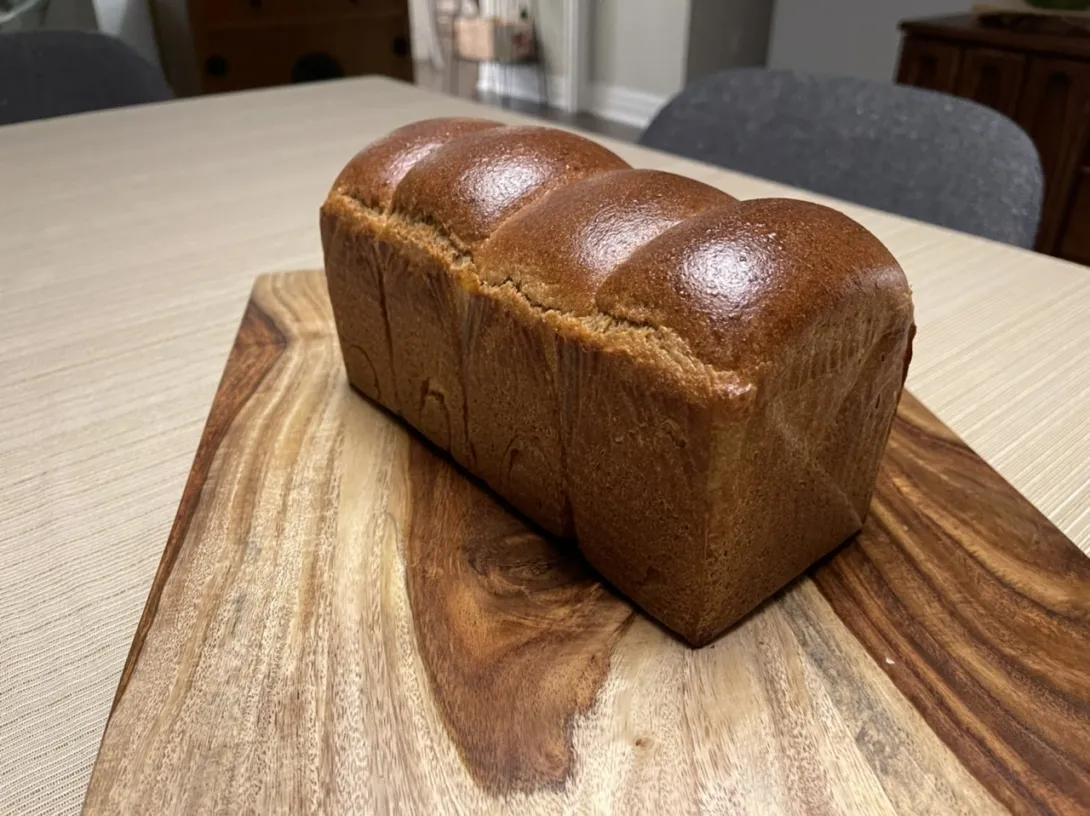
Still more squat than I want, my formula needs more work!
- Benito's Blog
- Log in or register to post comments
For all spelt that looks incredibly good, plus with the trademarked sweet stiff levain that loaf is just great. Hope the nutty flavour and softness will be great too!
As you imply, I guess there is some tinkering to do to get even more height. Although what exactly I don't know, you can't really add more VWG than that! Perhaps a blend with wholewheat.
Since your techniques are great, would like to know if melting the button (vs using softened butter) is a thing you do intentionally?
Also, I find preparing the Tangzhong in a microwave to be more convenient, but maybe I'm missing out on something with not using a saucepan.
-Jon
Thank you Jon for your comments and the suggestion to consider blending some whole wheat with the spelt. After adding as much VWG as I have to this one, I’m doubting that I can go much further with a 100% spelt loaf of this kind. The one thing I haven’t yet done that I did to the 100% spelt hearth loaf that was successful is to sift the bran out and then scald that separately. I might do that, although just blending with some whole wheat might be a better approach. We’ll see, I’m going to leave this for a bit and mull it over.
I do intentionally melt the butter rather than adding in room temperature butter. It started because I would forget to leave the butter out overnight and then I noticed that I really didn’t find there to be any difference in the outcome when I added melted vs room temperature butter. So I just melt it a drizzle it in slowly after the gluten is at least moderately developed.
In terms of the tangzhong, I haven’t tried using the microwave for that. So long as the flour is “dissolved” in the milk there’s no reason it wouldn’t work quite well. I doubt you’re missing out on anything by using the microwave except the work out involved with the constant stirring!
Benny
The bread is tasty. Once again the lowered sugar leaves only a hint of sweetness while the nutty flavour of the whole spelt is forward along with the dairy notes. One advantage of a more usual height loaf is that the slices will actually fit in my toaster all the tall loaves are too tall to fit sideways in the toaster 🤣
Image
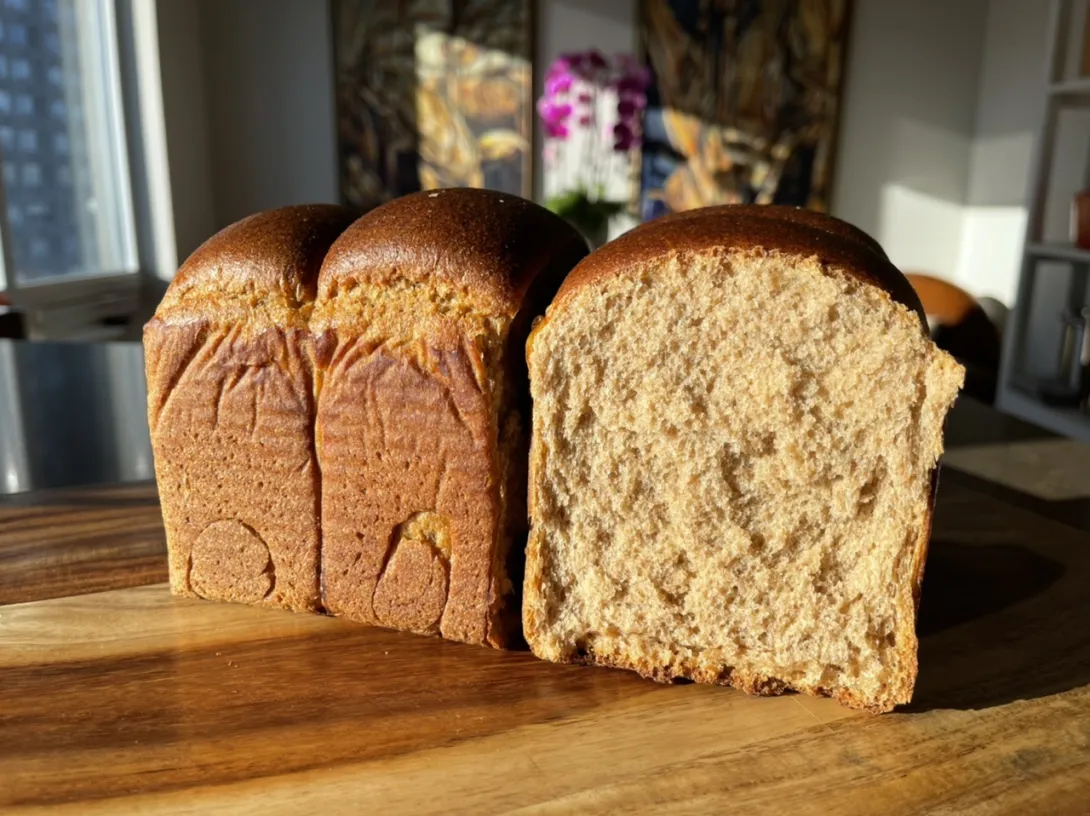
Image
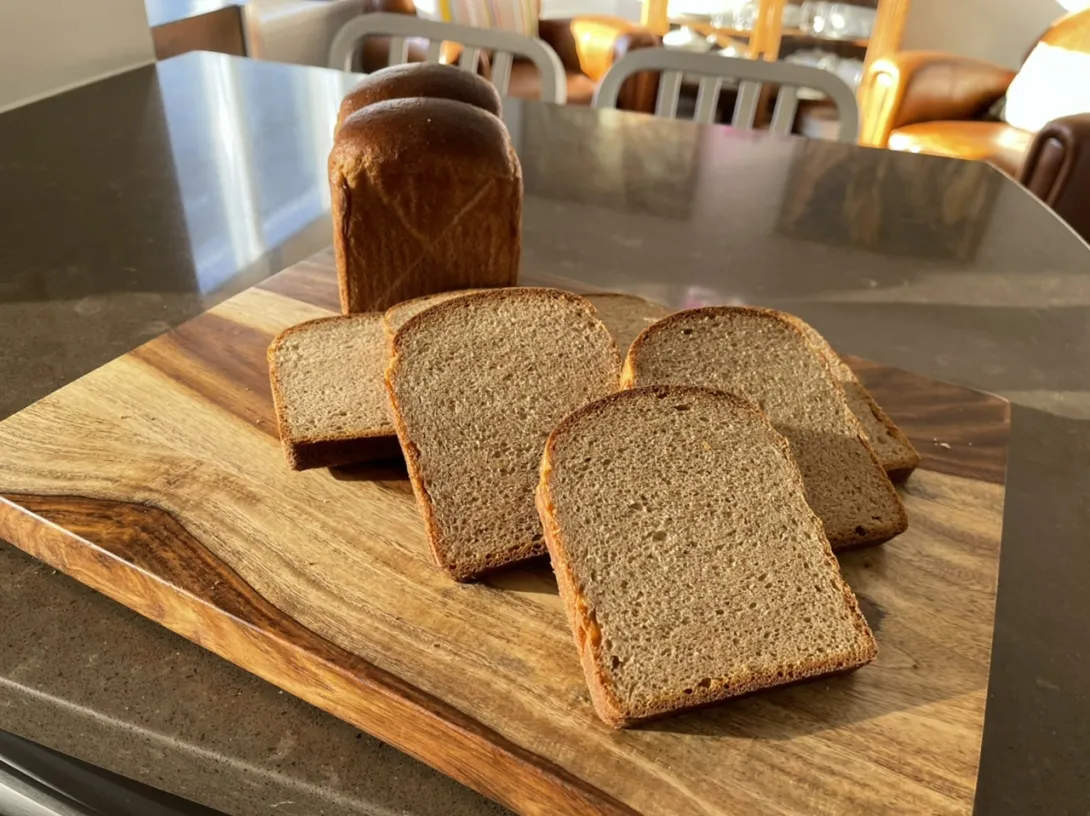
Image
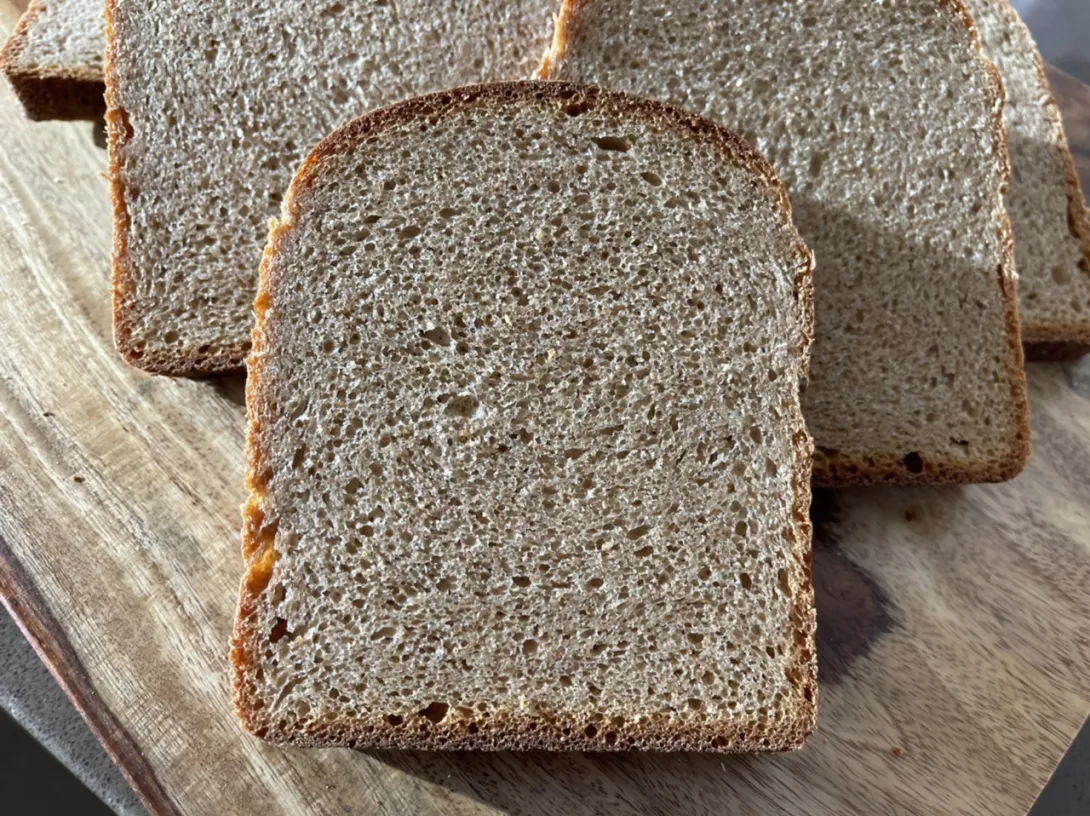
Loaf looks great Benny and glad to hear it fits in the toaster. :-) I might have to give this one a go. I haven't tried anything yet that's 100% spelt, but this looks really good.
My spelt would be home milled. When you're sifting out the bran, are you using a #40 or #50 screen?
Troy I haven’t yet tried sifting the bran for the Hokkaido milk breads so far, they haven’t needed it. I’ve only been sifting for hearth loaves. However, the lack of height on the 100% spelt loaves has made me think about it more than once.
When I have sifted for the hearth loaves I use a #40 sieve which is the only one I have.
I’d love to see you bake this and get your feedback on it. Definitely use the stiff sweet levain to avoid the sour tang in the bread which wouldn’t be wanted in this bread.
Benny